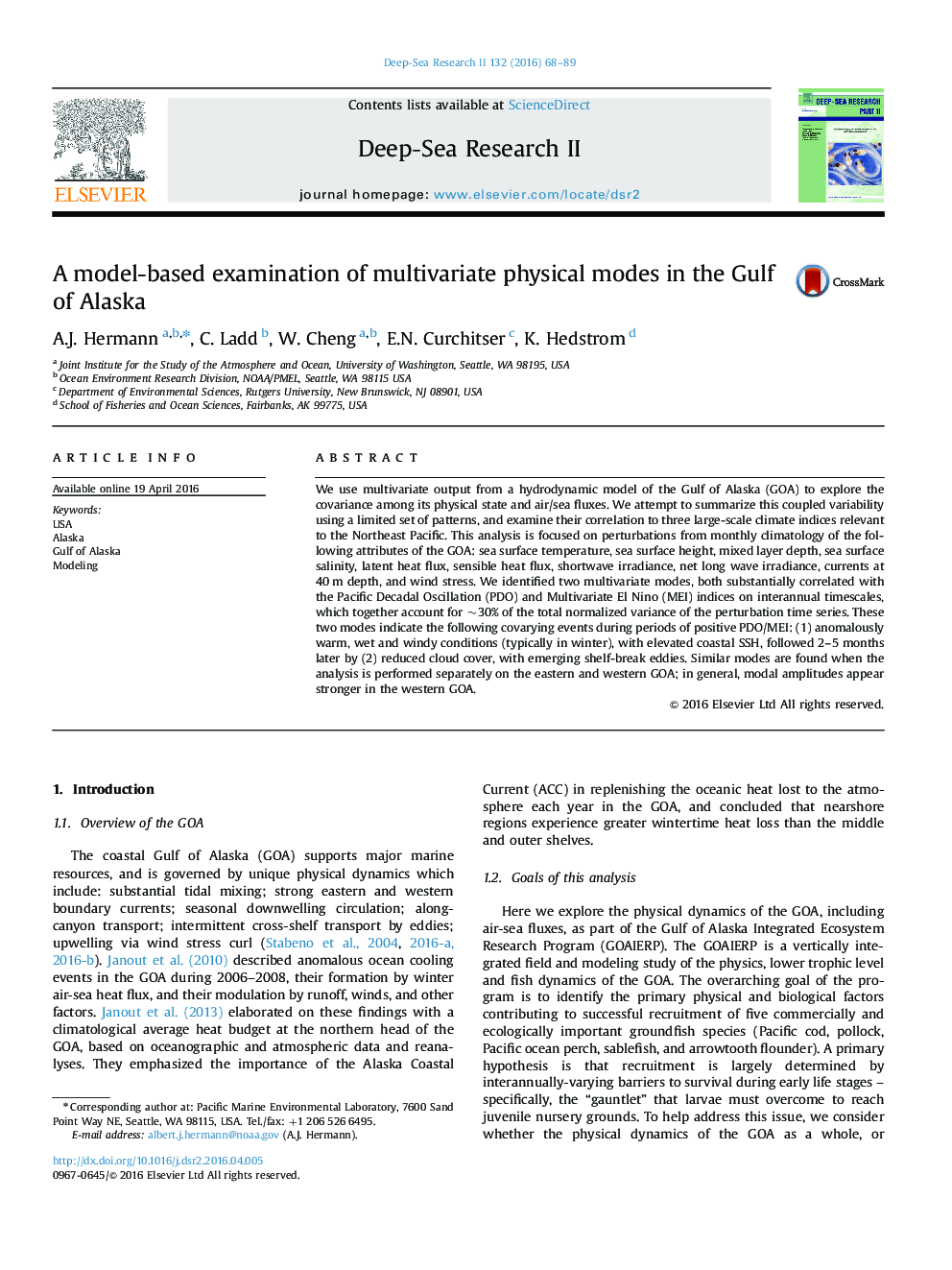| Article ID | Journal | Published Year | Pages | File Type |
|---|---|---|---|---|
| 4536080 | Deep Sea Research Part II: Topical Studies in Oceanography | 2016 | 22 Pages |
We use multivariate output from a hydrodynamic model of the Gulf of Alaska (GOA) to explore the covariance among its physical state and air/sea fluxes. We attempt to summarize this coupled variability using a limited set of patterns, and examine their correlation to three large-scale climate indices relevant to the Northeast Pacific. This analysis is focused on perturbations from monthly climatology of the following attributes of the GOA: sea surface temperature, sea surface height, mixed layer depth, sea surface salinity, latent heat flux, sensible heat flux, shortwave irradiance, net long wave irradiance, currents at 40 m depth, and wind stress. We identified two multivariate modes, both substantially correlated with the Pacific Decadal Oscillation (PDO) and Multivariate El Nino (MEI) indices on interannual timescales, which together account for ~30% of the total normalized variance of the perturbation time series. These two modes indicate the following covarying events during periods of positive PDO/MEI: (1) anomalously warm, wet and windy conditions (typically in winter), with elevated coastal SSH, followed 2–5 months later by (2) reduced cloud cover, with emerging shelf-break eddies. Similar modes are found when the analysis is performed separately on the eastern and western GOA; in general, modal amplitudes appear stronger in the western GOA.
